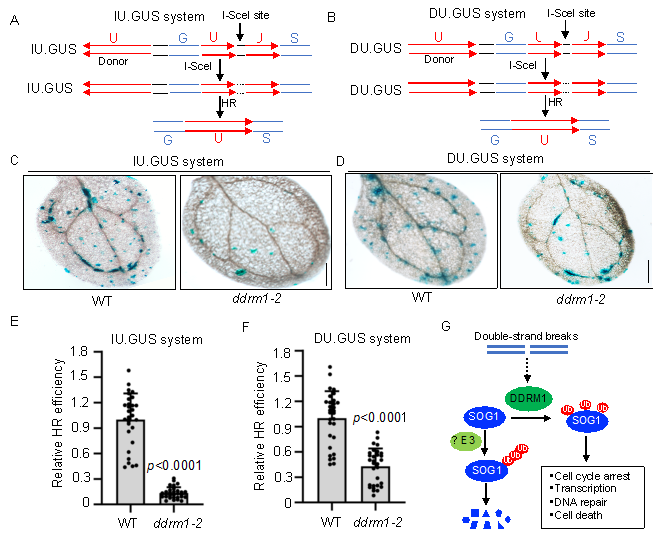Prompt: Recently, Professor Yan Shunping’s team (from the College of Life Science and Technology of HZAU) released its latest findings in PNAS, an international academic journal. The title of the study was “A plant-specific module for homologous recombination repair”. It not only identifies that DDRM1-SOG1 is a plant-specific module for homologous recombination repair (HR), but also suggests that ubiquitination is a new mechanism of plant HR, providing a new idea for using HR mechanism to improve the efficiency of gene targeting.
All organisms need to pass the correct genetic information (DNA) to the next generations. However, various exogenous and endogenous factors can lead to DNA damage. To maintain genome stability, all organisms have evolved complex and sophisticated DNA damage responses (DDR) mechanisms. DNA double-strand breaks (DSBs), is the most serious forms of DNA damage. Homologous recombination repair (HR) is the main mechanism for error-free repair of DNA DSBs and the basis for gene targeting using genome editing tools.
Compared with animal studies, the HR mechanisms in plants are still poorly understood. As one of the core proteins in plant DDR, transcription factor SOG1 is considered as the plant counterpart of p53, which is the most studied protein and the most important anticancer protein. In contrast to p53, little is known about SOG1.
Researchers find in this study that mutant E3 ubiquitin ligase DDRM1 causes Arabidopsis thaliana to be hypersensitive to camptothecin, a DNA DSB-inducing reagents. DDRM1 contains an N-terminal BRCT (BRCA1 C-terminal) domain and a C-terminal RING (Really Interesting New Gene) domain. It’s highly conserved in plants, and its biological function has not been reported. Through further investigation, the researchers explore that DDRM1 could ubiquitinate SOG1 and promote its protein stability. In ddrm1 mutants, the efficiency of HR decreases greatly, indicating that DDRM1 is required for HR. This study not only reveals the new mechanism of plant regulator of HR, but also provides a new idea for using HR mechanism to improve the efficiency of plant gene targeting. In addition, the mechanism of plant regulator of SOG1 protein stability which was revealed for the first time is of scientific importance. The results were published in PNAS with a title of “A plant-specific module for homologous recombination repair”.

Fig. 1. DDRM1 is required for HR. (A, B) Schematic representation of HR reporter system. (C, D), Representative GUS staining images of cotyledon. The blue signals indicates HR events. (E, F) The relative HR efficiency. (G) A simplified model for DDRM1-SOG1 in HR.
The corresponding author of this paper is Prof. Yan Shunping from the the College of Life Science and Technology of HZAU, and the postdoctoral fellow Wang Xuanpeng is the first author. This work was supported by the National Natural Science Foundation of China (31970311, 31800216, and 32000372); Thousand Talents Plan of China-Young Professionals Grant; Huazhong Agricultural University Scientific & Technological Self-innovation Foundation (2014RC004); and Long Yun program and Bai Chuan program of College of Life Science and Technology, Huazhong Agricultural University.
It is reported that Prof. Yan’s team was built in 2014 and has made lots of innovative achievements in the field of plant DNA damage response. The team’s research results were published in international journals such as Nature Plants, Nucleic Acids Research, PNAS (2 articles), and Plant Cell with Prof. Yan as the corresponding author.
Source: http://news.hzau.edu.cn/2022/0413/62950.shtml
Translated by: Chen Ru
Supervised by: Wang Xiaoyan